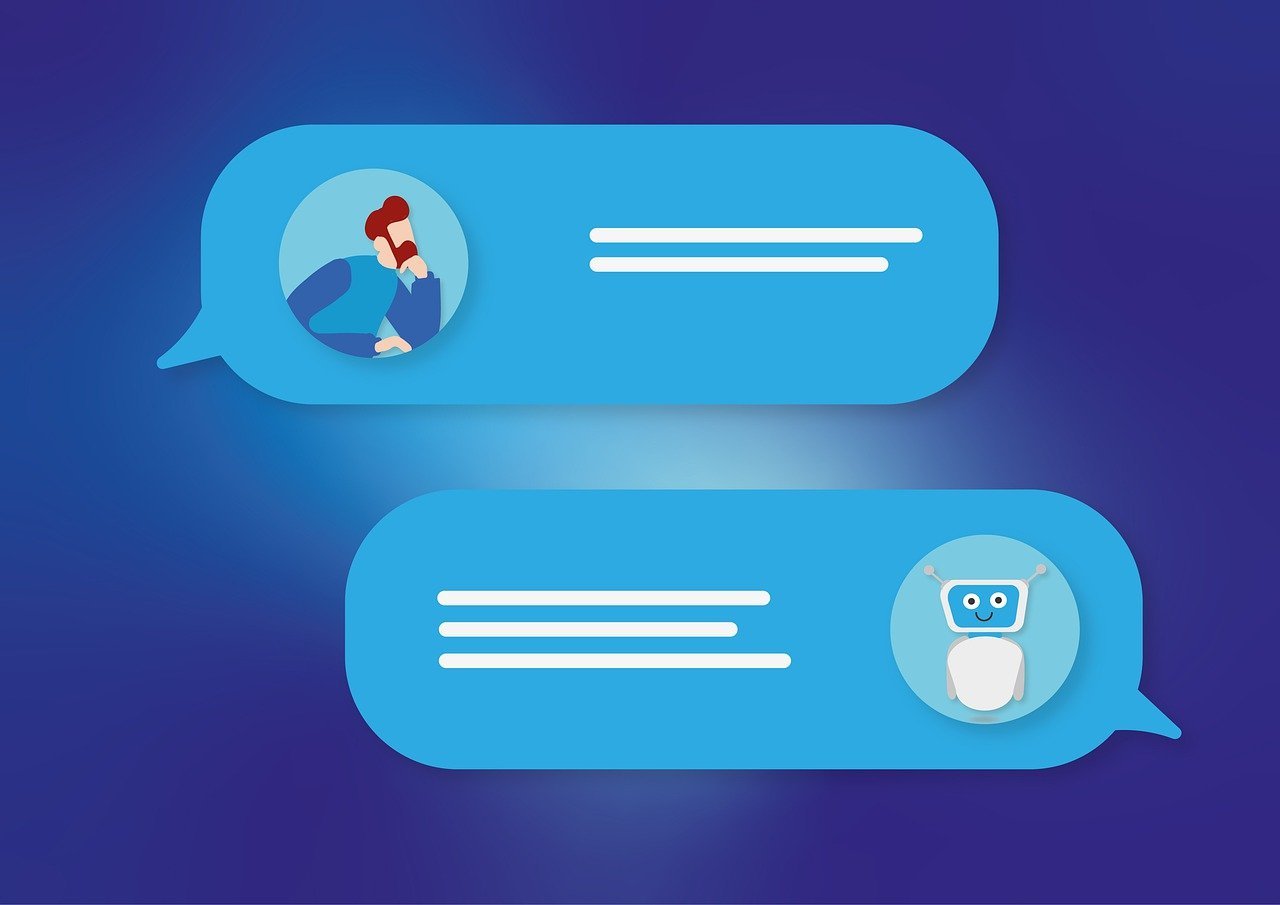Every business today is looking for ways to connect with customers faster, more effectively, and without breaking the bank. For mid-sized firms, this balance is critical—you need tools that make an impact but also fit within your budget and resources. Enter the world of chatbots and conversational AI.
Both technologies promise to transform how you handle customer interactions, from answering queries to closing sales. But they aren’t the same. While chatbots have been around for a while and offer simple automated responses, conversational AI takes things further, delivering more natural, intuitive, and human-like interactions.
So, how do you decide which one is right for your business? In this article, we’ll break down the differences, benefits, and limitations of chatbots and conversational AI. By the end, you’ll know exactly what works best for your mid-sized firm.
What Are Chatbots?
Chatbots are like your first step into automation. They’re programs designed to answer specific questions or perform basic tasks. Think of the little pop-up on websites saying, “Hi, how can I help you today?” Most of the time, these bots work using predefined scripts. If a customer types “What are your business hours?” the bot pulls a response from its database and displays it instantly.
Simple Automation for Basic Tasks
This kind of functionality works well for FAQs or straightforward tasks like checking order statuses. However, chatbots don’t “think” or understand the context. If a question falls outside their programmed script, they often respond with something like, “I’m sorry, I don’t understand that.”
Affordable and Easy to Implement
One of the main reasons chatbots are popular with mid-sized firms is their affordability and simplicity. Many platforms, like Facebook Messenger or WhatsApp, offer basic chatbot setups that require little technical know-how. With minimal investment, you can add a chatbot to your website or app and start automating simple customer interactions.
However, their limitations become apparent as soon as customers ask more complex or nuanced questions. If your business relies heavily on personalized customer service, chatbots might not cut it.
The Good, the Bad, and the Gaps
Chatbots shine when you need quick, repetitive answers. They reduce the workload for your team and free them up for more complex inquiries. But they also have clear downsides. Their rigid nature can frustrate customers, especially when they can’t answer non-standard questions. For mid-sized firms dealing with diverse customer needs, this can create friction rather than solving problems.
What Is Conversational AI?

Conversational AI takes chatbots to the next level. Powered by technologies like natural language processing (NLP) and machine learning, conversational AI understands and interprets human language more intuitively. It doesn’t rely solely on scripts. Instead, it learns from data and improves over time.
Beyond Scripts: The Power of Understanding
For example, let’s say a customer types, “I need help choosing the best laptop for graphic design.” A conversational AI system won’t just respond with a generic “Please check our catalog.” Instead, it might ask follow-up questions like, “What’s your budget?” or “Do you prefer a Mac or a PC?” It’s designed to simulate real human conversations, making the experience smoother and more satisfying for users.
Personalized, Context-Aware Interactions
Unlike traditional chatbots, conversational AI remembers context. If a customer previously asked about shipping times and then later asks, “What’s the return policy for this item?” conversational AI can connect the dots, providing a seamless experience. This contextual understanding is especially valuable for mid-sized firms trying to compete with larger companies that have dedicated customer service teams.
For instance, a conversational AI system can help mid-sized e-commerce stores by recommending products based on a customer’s past purchases or browsing history. This kind of personalization makes customers feel valued, increasing loyalty and sales.
Investment with Long-Term Payoff
Conversational AI is more advanced than chatbots, and with that comes higher costs and more technical requirements. Setting up a conversational AI system often involves integrating it with your CRM, customer databases, and other tools. But the payoff is significant. It doesn’t just handle basic queries; it can close sales, provide tailored recommendations, and even troubleshoot technical issues.
For mid-sized firms with growing customer bases, conversational AI offers scalability without sacrificing the quality of interactions.
Chatbots vs. Conversational AI: The Key Differences
Depth of Understanding
The biggest difference lies in how they handle customer queries. Chatbots are script-driven, while conversational AI understands intent and context. A chatbot might falter if a question is phrased slightly differently than expected. Conversational AI adapts to various ways of asking the same thing.
For example:
- Chatbot: “I don’t understand your question.”
- Conversational AI: “Did you mean you want to track your package? Let me help you with that.”
Learning and Improvement
Chatbots stay static unless manually updated. Conversational AI, on the other hand, improves over time. Every interaction teaches it something new, making it smarter and more efficient. This means your customer support gets better without additional effort on your part.
What’s Right for Your Mid-Sized Firm?

Start by asking, “What do I want to achieve?” If your primary goal is to handle high volumes of repetitive questions, chatbots might be all you need. They’re cost-effective, quick to implement, and get the job done for straightforward tasks.
Assess Your Needs
But if your business requires deeper customer engagement—like guiding users through purchases, handling nuanced questions, or creating personalized experiences—conversational AI is the way to go. For instance, a mid-sized SaaS firm could use conversational AI to onboard new users, answer technical questions, and offer tailored product tips.
Consider Your Budget and Resources
Chatbots are easier on the wallet, but they come with limitations. Conversational AI is a bigger investment, both in terms of money and setup time. However, it also offers greater long-term value, especially as your business grows and customer interactions become more complex.
If your budget is tight, starting with a chatbot and gradually upgrading to conversational AI as your needs evolve could be a smart approach.
Think About Customer Expectations
Your customers’ expectations should guide your decision. If you’re in an industry where fast, simple answers suffice—like quick-service retail or logistics—chatbots will likely meet their needs. But if your audience values detailed assistance and a personal touch, conversational AI is the better choice.
For example, a mid-sized financial services firm handling sensitive customer queries about loans or investments would benefit more from conversational AI, as it provides the depth and nuance required for such conversations.
Implementation Tips for Success
Start with a Pilot

Whether you choose chatbots or conversational AI, start small. Launch a pilot program to test the technology and gather feedback from both customers and employees. This helps you identify areas for improvement before rolling it out on a larger scale.
Train and Customize
Even the smartest AI needs proper training to align with your brand voice and business needs. For chatbots, this means creating accurate scripts. For conversational AI, it involves feeding the system with relevant data, like past customer interactions and FAQs.
Monitor and Iterate
Both chatbots and conversational AI require ongoing monitoring. Analyze how customers interact with them, look for gaps in understanding, and continuously update their capabilities. For conversational AI, this process is often automated, as the system learns from interactions. But human oversight ensures the technology stays aligned with your goals.
The Future of Chatbots and Conversational AI
As AI technology continues to evolve, the gap between chatbots and conversational AI will shrink. Chatbots will become more intelligent, adopting some features of conversational AI, while conversational AI will become more accessible and cost-effective.
For mid-sized firms, this means exciting opportunities to enhance customer interactions without breaking the bank. By staying informed and adapting to these advancements, you’ll position your business to thrive in an increasingly digital world.

Related: Check out our free tools:

Combining Chatbots and Conversational AI for Maximum Impact
For mid-sized firms, a hybrid approach that combines chatbots and conversational AI can deliver the best of both worlds. You don’t have to choose one over the other—each serves a unique purpose and can complement the other.
The Hybrid Approach
Start by deploying chatbots for simpler, high-volume tasks. For example, use them to handle FAQs, process basic inquiries, and direct customers to the right department. This ensures you’re reducing the load on your human support team and saving costs on repetitive tasks.
Layer conversational AI on top of this system to handle more complex, nuanced interactions. For example, if a customer starts with a chatbot query but their question becomes more detailed, conversational AI can take over seamlessly, providing an elevated experience without interruptions.
By combining these technologies, you create a scalable solution that adapts to your growing business needs while delivering personalized, meaningful customer interactions.
Enhancing Customer Journeys with AI
One of the greatest benefits of blending chatbots and conversational AI is the ability to create smoother customer journeys. For instance:
- A chatbot can greet a website visitor and ask them basic questions like their name or what they’re looking for.
- Once the chatbot gathers this initial data, conversational AI can take over to provide detailed recommendations or assist with a specific issue.
For example, a mid-sized travel agency might use a chatbot to answer common questions like “What destinations do you offer?” or “What’s the refund policy?” If a user then asks, “Can you help me plan a family vacation to Europe?” the system seamlessly transitions to conversational AI, which can provide personalized travel packages, suggest itineraries, and even complete bookings.
This integration ensures customers feel supported at every stage, increasing satisfaction and boosting conversion rates.
Scaling for Growth
As your business grows, so does the complexity of your customer interactions. Starting with chatbots allows you to address immediate automation needs without overwhelming your budget. Over time, you can scale up by integrating conversational AI into areas where deeper engagement is required, such as sales consultations or onboarding new clients.
For instance, a mid-sized SaaS company could initially use chatbots to handle support tickets. As they expand, they could deploy conversational AI to provide technical support, recommend product features, or offer tutorials tailored to individual users.
This phased approach ensures you’re not overcommitting resources while still laying the groundwork for long-term success.
Measuring Success: Evaluating ROI from Chatbots and Conversational AI

No matter which technology you choose, measuring its impact on your business is critical. For chatbots, track metrics like:
Key Metrics to Track
- Response time: How quickly are queries being addressed?
- Resolution rate: How many questions are successfully answered without human intervention?
- Cost savings: How much are you saving on customer support compared to before implementation?
For conversational AI, focus on metrics like:
- Engagement: Are customers spending more time interacting with your AI?
- Conversion rates: Is conversational AI helping close more deals or complete more purchases?
- Customer satisfaction: Are users reporting positive experiences after interacting with the system?
By regularly monitoring these metrics, you can identify areas for improvement and ensure your investment is delivering a strong return.
Gathering Feedback
Don’t rely solely on numbers—ask your customers for feedback. Include surveys after chatbot or conversational AI interactions to understand how users perceive the experience. Are they finding the system helpful? Are there areas where it falls short? Use this feedback to fine-tune your technology and ensure it aligns with customer expectations.
For instance, if customers frequently report frustration with the chatbot’s inability to understand certain queries, you might need to expand its script or introduce conversational AI for those scenarios.
The Competitive Advantage for Mid-Sized Firms

In a world where consumers expect fast, personalized service, leveraging AI can set your mid-sized firm apart. While larger companies might have bigger budgets, mid-sized firms often have the advantage of agility. By adopting chatbots and conversational AI strategically, you can create tailored experiences that resonate with your audience and build long-term loyalty.
Building Trust and Loyalty
For example, if a customer has a seamless interaction with your AI system—whether it’s resolving an issue or finding the perfect product—they’re more likely to return and recommend your brand to others. This loyalty translates directly into repeat business and word-of-mouth referrals.
Competing with Larger Players
Chatbots and conversational AI level the playing field for mid-sized businesses. While enterprise-level companies might dominate with massive customer service teams or advanced systems, AI allows you to deliver comparable experiences without the same overhead.
For instance, a mid-sized e-commerce firm can use AI to provide personalized shopping recommendations and fast query resolutions, just like a giant like Amazon. By implementing these tools effectively, you position your business as a strong competitor in your industry.
Preparing for the Future of Customer Interaction

The landscape of customer interaction is constantly evolving. Technologies like voice-enabled AI, multilingual support systems, and predictive analytics are becoming more prevalent. Mid-sized firms that adopt chatbots and conversational AI today will be better prepared to integrate these future advancements seamlessly.
Staying Ahead of Trends
For example, a conversational AI system that supports voice input or predicts customer needs based on past interactions can provide an even more engaging experience, keeping your business ahead of the curve.
Empowering Your Team
AI isn’t just for customers—it also empowers your internal teams. By handling routine tasks and streamlining customer interactions, chatbots and conversational AI free up your employees to focus on higher-value activities, such as creative problem-solving or building relationships with key clients.
For example, a sales team might use conversational AI to pre-qualify leads, allowing them to focus their energy on closing deals. This not only improves efficiency but also boosts morale by reducing repetitive workloads.
Final Thoughts: Making the Right Choice
The choice between chatbots and conversational AI isn’t about which is better—it’s about which is better for your business. Chatbots are perfect for straightforward tasks and tight budgets, while conversational AI delivers deeper engagement and scalability.
For mid-sized firms, the best approach might be a combination of both. Use chatbots for simple queries and introduce conversational AI for more complex interactions. This hybrid strategy allows you to balance cost, efficiency, and customer satisfaction.
At the end of the day, the goal is to provide an exceptional customer experience. Whether it’s a chatbot guiding users to FAQs or conversational AI helping close a sale, the right technology can transform how your business connects with its audience. The key is to start now, experiment, and evolve as your needs and capabilities grow.
READ NEXT:
- Are Vanity Metrics Killing Your Marketing Efficiency? Here’s What to Track Instead
- Pinpointing Digital Marketing ROI: Why Your Metrics Aren’t Telling the Full Story
- Unlocking Real ROI in Digital Marketing: The Hidden Costs Draining Your Budget
- How Misaligned Marketing Funnels Are Blocking Your ROI Potential
- Best Digital Marketing Agency In Santa Ana, California
- Best Digital Marketing Agency In San Francisco, California





















